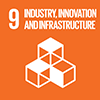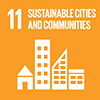Description/achievement of initiative
Hong Kong’s high rent prices force many low-income families to live in subdivided apartments (~108 sq.ft., $550/month). With Youth for Experimental Space, I will construct architectural blueprints to maximize vertical space, improve lighting, and increase efficiency by taking an inhabited unit and transforming it for improved living. YES’ goal is to work with charities, tenants, and real estate corporates to find economically viable ways for application. I will host an art exhibition showcasing the existing apartment alongside the version according to my blueprint, and seek endorsement to renovate a home, setting up a template for YES’ long-term mission.
Implementation methodologies
With this project, I will construct a blueprint that will improve space usage and overall user efficiency. In order to first gain an understanding for the living conditions in subdivided flats and experience the space firsthand, I will conduct site visits through NGOs that work locally to improve subdivided units. By taking a look at all the components of a home, I can develop ideas for innovative solutions to problems tenants face. The Society for Community Organisation (SoCO) has a variety of projects based on improving living spaces for tenants of subdivided apartments. One of these projects is focused on creating furniture that maximises space. Architectural projects such as this will provide a foundation for my research. In addition to drawing research from existing organisations, I will also look at official government documents and any other public information.\r\n\r\nFrom my research, I will come up with a number of design concepts and sketches. I will be looking at maximizing vertical space, improving lighting, increasing organizational efficiency, and creating more space for movement. At the same time, I will be familiarising myself with computer software used by architects, such as AutoCAD and SketchUp, provided by TETRA Architects & Planners. I will then translate my hand-drawn sketches onto the rendering programs and assess the concept in the context of the entire flat. The primary goal is to create features within the home that maximise space while also improving its livability. Once each feature is decided upon, I will create a final digital blueprint that shows the plan from various perspectives. From this blueprint, I’ll be able to create 3D models and, eventually, a to-scale mockup.\r\n\r\nI will create small- and large-scale models of my blueprint. At the end of the project, I will present a 3D version of the blueprint to scale, in the form of an art exhibit. In order to achieve this, I will reach out to event spaces that may have an interest in hosting the exhibition. Then the event will be publicized across social media platforms and by invitation, and then the exhibit will be hosted. It will show an existing subdivided flat, inspired by my site visits and research at the beginning of the project, as well as the new, redesigned version.
Arrangements for Capacity-Building and Technology Transfer
An important factor of the project will be considering the final blueprint’s ability for reproduction over several subdivided units. It will be important to consider adaptability and use elements of design that are applicable in different spaces. The final blueprints for this project will serve as a template for designing the improvement of other subdivided flats in Hong Kong. In order to see the project implemented, I would have to approach the government, landlords, and tenants to seek funding and permission to renovate a flat. If necessary, I would also contact local organisations and relevant real estate corporates.\r\n\r\nI hope that my project is able to, through my exhibit, website, and podcast, inspire other youths to build upon my project or pursue their own individual ideas. From my exhibit, I hope that people with the means and resources to help take the opportunity and feel encouraged to do so. Including a range of youth projects on my website and podcast in the future can allow other aspiring architects and designers to learn how to develop their projects and motivate them to take action.
Coordination mechanisms/governance structure
A part of my initial research will involve a site visit to an existing subdivided unit complex. In order to gain access and get permission to visit and talk to tenants, I will have to speak with NGOs in Hong Kong that focus on subdivided apartments and cage homes. Once I have the necessary permissions, I will be able to talk to the tenants and gain a better understanding about life in a subdivided home.\r\n\r\nAnother important part of my research is, beyond discovering the components of existing subdivided flats, also finding solutions and innovations people have already come up with. The Society of Community Organization (SoCO) in Hong Kong has several projects dedicated to helping tenants of subdivided apartments. One of these includes a project by a number of architects that designs furniture to maximize vertical space. By reaching out to SoCO, I can draw inspiration from their projects and potentially see them in real life as well.\r\n\r\nWhen I begin creating my own architectural concepts, I will start with hand-drawn sketches. When creating these sketches digitally, I will be doing so with the assistance and mentorship of Andrew Kinoshita, Director at TETRA Architects & Planners in HK. TETRA has provided equipment and software such as AutoCAD and SketchUp to create my digital blueprints.\r\n\r\nTo create my initial 3D mockups using discarded materials such as cardboard, foam boards, tape, etc. I will eventually need large, empty spaces such as a warehouse. Using these mockups, I will create to-scale models of an existing subdivided unit and the newly redesigned version. To exhibit these models in the form of an art exhibition, I will contact galleries in Hong Kong that have large, available spaces. I will display my work over a selected period of time and publicize it through social media, my website, and other forms of invitation. The art exhibit and project as a whole will hopefully inspire others to explore ways to help tenants of subdivided flats and take action.
Partner(s)
Andrew Kinoshita (TETRA Architects & Planners), Better Together Foundation, ITS Education, SoCo Hong Kong




 August 2020
August 2020
 September 2020
September 2020
 September 2020
September 2020
 Time-frame: July 2020 - September 2020
Time-frame: July 2020 - September 2020